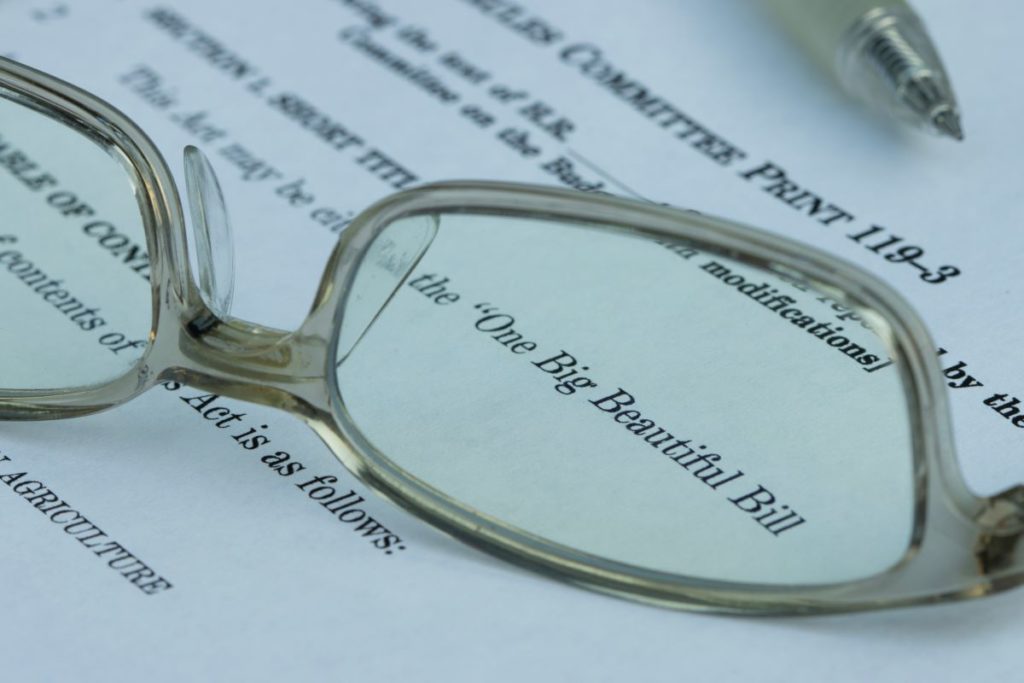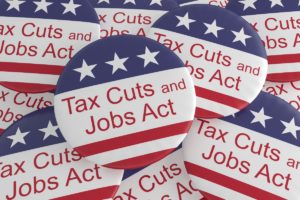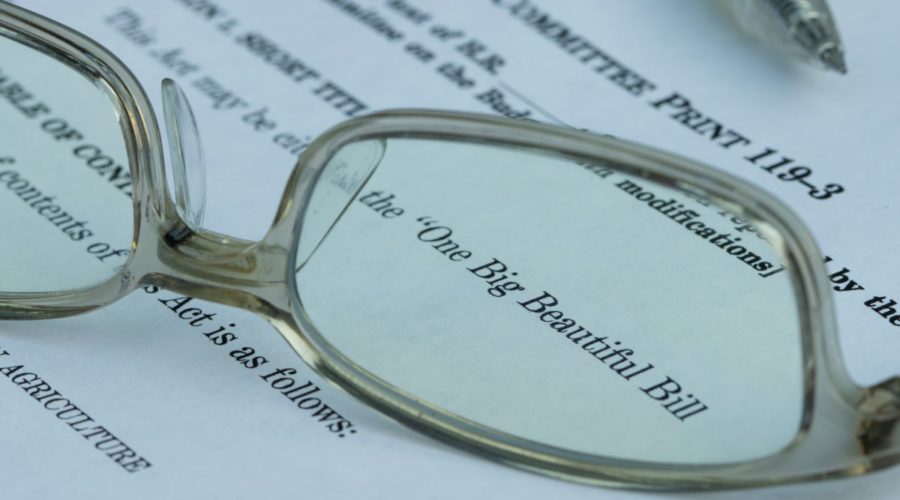Inside the ‘One Big Beautiful Bill’

How the 2025 Reconciliation Act Impacts the Brush Industry
By Mark E. Battersby
The new budget reconciliation law, the so-called “One Big Beautiful Bill Act” (OBBBA), prevents an over $4 trillion tax hike from occurring at the end of this year by extending and making permanent the temporary tax cuts of the 2017 Tax Cuts and Jobs Act (TCJA).
For suppliers, manufacturers and retailers in the brush industry, the 2025 reconciliation act created new incentives and a few potential pitfalls that will impact their tax strategies and long-term planning. A good example of the changes likely to help the bottom lines of many manufacturers and suppliers are the extended tax cuts and, in one case, new write-offs.
Depreciation Write-offs
One of the key elements of the 2017 TCJA was a 100 percent bonus depreciation write-off that allowed businesses to immediately deduct the full cost of business equipment. When created, however, that write-off was scheduled to equal only 40 percent in 2025, 20 percent in 2026, and 0 percent in the 2027 tax year and beyond.
Today, bonus depreciation is back, and the original, full 100 percent deduction will apply through 2029 for qualified property acquired after January 19, 2025. In addition to bonus depreciation, the reconciliation act doubled the current Section 179 first-year expensing deduction from $1,250,000 to $2,500,000 and increased the amount of assets that could be acquired before the write-off was phased out from the current $3,130,0000 to $4,000,000. The increases will take effect for the 2025 tax year.
New Deduction For Manufacturing Facilities
Although the bonus depreciation and Section 179 first-year expensing write-offs allowed partial expensing of equipment purchases, the new law extended immediate expensing to include physical structures, a category traditionally subject to longer depreciable lives.
A new tax incentive was included in the reconciliation act for businesses that invest in new domestic manufacturing and production facilities. That incentive created a 100 percent deduction for qualified production property (QPP).
The new write-off will allow any manufacturer investing in certain depreciable real property that is used in qualified production activities to immediately deduct 100 percent of the cost. To qualify, construction must have begun after January 19, 2025, and before January 1, 2029, and the property must be placed in service before January 1, 2033.
Additionally, the property must be used as an integral part of a qualified production activity such as developing, improving, installing (if combined with other activities), growing, extracting or creating. Lessors cannot qualify since they do not use facilities in their own QPP activities.
Although the QPP includes land and buildings, it doesn’t include property used for offices, parking, administrative services, sales activities or any other non-QPP activity. If used for something other than a QPP activity in the 10 years following the initial deduction, any deduction will be recaptured.
Pass-through Brush Businesses

The 2017 TCJA was created to reduce taxes, simplify the tax code and stimulate growth. The TCJA did lower income tax rates, and it also increased deductions for pass-through business entities. Under the TCJA, there was a favorable tax rate for the income of pass-through businesses such as sole proprietorships, partnerships and S corporations that is now in effect permanently.
The reconciliation act makes permanent this deduction for businesses operating as pass-through entities, allowing a deduction of up to 20 percent of their qualified business income (plus 20 percent of qualified real estate investment trust [REIT] dividends and qualified publicly traded partnership [PTP] income).
That new legislation also created an inflation-adjusted minimum deduction of $400 for taxpayers with at least $1,000 in qualified business income to ensure that eligible small business owners can access an enhanced baseline deduction.
Overtime Reporting
While the new legislation doesn’t completely eliminate federal income taxes on tips and overtime as promised before the election, it does provide a new deduction for some workers and a reporting headache for their employers.
Unless exempt, employees covered by the Fair Labor Standards Act (FLSA) must receive overtime pay for hours worked over 40 in a workweek at a rate not less than time and a half their regular rates of pay.
All workers who can’t be labeled as executive, administrative or professional employees are considered “exempt employees” and must be paid overtime. There is also an exemption for workers with income above $35,568 per year ($484 per week).
Now, however, the reconciliation act has created a new tax deduction for workers making less than $150,000, allowing them to deduct as much as $12,500 for single filers and $25,000 for those filing jointly. Unfortunately, this deduction begins to phase out for single filers earning $150,000 or more, and for joint filers earning $300,000 or more and will expire in 2029.
For the brush manufacturer or supplier, the employer, overtime is still considered as wages for FICA tax purposes, and is still subject to Social Security and the Medicare tax. Since workers can only deduct overtime that is reported on their employer’s information returns, such as Form W-2, employers will have to adjust.
This year, 2025, will serve as a “transition year” with employers permitted to approximate overtime using a “reasonable method.” While more guidance and more inclusive information returns are likely, every brush manufacturer and supplier paying qualified overtime should ensure they are prepared for separate W-2 reporting next year.
Interest Expense Caps
For years, tax law has capped the amount of business interest that can be deducted to 30 percent of a company’s adjusted gross income. Most small businesses, defined as businesses whose average annual gross receipts for a three-year period do not exceed $27 million (the inflation-adjusted amount for tax years beginning in 2022), were exempt and could continue deducting the full amount of their business interest.
The new reconciliation act restores the interest expense limitation under Section 163(j) to its initial form. Since 2022, the limitation has been calculated after allowing deductions for depreciation, amortization and depletion. That form has reduced adjusted taxable income (ATI), the base upon which the limit is applied, thereby reducing annual business interest expense deductions for many taxpayers. The new act will restore the add-backs for depreciation, amortization and depletion deductions.
Energy Deductions Lacking Longevity
Those brush manufacturers and suppliers planning on “going green” will face a new depreciation adjustment. Any green-energy producing assets will no longer be considered five-year properties for depreciation purposes. They must now be depreciated using the general class life rules, resulting in longer depreciation periods.
On a somewhat better note, those manufacturers or suppliers that construct, improve or design the building they own to be energy efficient may continue to qualify for the Section 179D deduction for energy efficient commercial buildings. Under the new legislation, this credit won’t terminate for any property for which construction began before June 30, 2026.
Research and Development
Research and development (R&D) expenses for brush manufacturers? The reconciliation act reinstates the immediate deduction for all domestic R&D expenses. For some, R&D might involve costs associated with improving or developing products, processes or services. For others, enhancing supply chain efficiency, developing new distribution models or improving the customer experience might qualify as R&D expenses.
As a change from the existing law that requires a five-year amortization period, the new act reinstates the immediate deductions for all domestic R&D expenses, such as salaries for R&D staff, costs of materials used in research and payments to third-party contractors for R&D services.
Under the reconciliation act, businesses with domestic R&D expenses in tax years starting on or after January 1, 2022, and before January 1, 2025, may elect to deduct any remaining unamortized amount either in full over a single year or evenly over two years, thereby accelerating the tax benefit of those expenses.
Those businesses with gross receipts under $31 million will be permitted to amend previously filed tax returns from 2022 through 2024 to remove the capitalization of domestic R&D. Software development expenses will be permanently treated as research expenses under Section 174.
Excess Business Losses
The owners of unprofitable brush manufacturing operations will, thanks to the new bill, face continued restrictions on the amount of business losses they can write off. The limit on excess business losses (EBLs) for noncorporate taxpayers, originally set to expire after 2028, is now permanent. That means individuals, trusts and estates will continue to face limits on the deduction of business losses from non-business income.
While the threshold remains at $313,000 in 2025 ($626,000 for married couples filing jointly), the reconciliation act does clarify the existing guidance and now requires income and deductions from all of a taxpayer’s businesses to be aggregated.
International Changes
Brush manufacturers and suppliers active internationally should be aware of several “tweaks” that impact how so-called “Global Intangible Low Taxes Income” (GILTI) and foreign-derived tangible income (FDII) are calculated. Eliminated, for example, is the 10 percent qualified business asset investment (QBAI) base for both the GLTI and the FDII.
For manufacturers, the change is expected to raise GILTI inclusions while boosting FDII deductions. The revised expense allocation rules eliminate the allocation of interest, research and other costs to GILTI income, instead treating them as U.S.-sourced. These changes take effect in 2026.”
The reconciliation act also modifies the rates computed for GILTI and FDII. The Section 250 deduction rate for GILTI will be reduced from 50 percent to 40 percent. The Section 250 deduction rate for FDII will be reduced from 37.5 percent to 33.334%. The adjustments to the Section 250 deduction rates are intended to produce an effective tax rate of 14 percent for both pools of income. These changes also take effect in 2026.
The Bottom Line
The 2025 reconciliation act makes significant changes to business taxes, extending, modifying and, in many cases, making them permanent. The TCJA created a tax credit for compensating employees while they are on family or medical leave, as long as the business had a qualified plan for those payments. The reconciliation act permanently extended this credit while expanding it.
The reconciliation act also permanently increased the estate, gift and generation skipping transfer tax (GSTT) exemption to $15 million. This change will allow greater amounts to be passed as gifts or inheritances, beginning in 2026 when the new exemption kicks in.
Under the new rules, the charitable donations of incorporated businesses will have a new 1 percent floor (beginning in 2026), with only contribution amounts above that amount deductible. The 10 percent ceiling for total annual contributions remains. Fortunately, the contributions exceeding the 10 percent limit can be carried forward for up to five years.
It should also be noted that the new federal law increases the cap on the deduction for state and local taxes to $40,000 (reverting to $10,000 after five years) for taxpayers making less than $500,000.
Other provisions — ranging from new deductions to technical adjustments — will require every brush manufacturer, supplier and retailer to track developments at both the federal and state levels. Engaging a tax professional is strongly advised to help plan for and maximize the potential savings under the 2025 reconciliation act.
This story appears in Brushware’s September–October 2025 issue.

